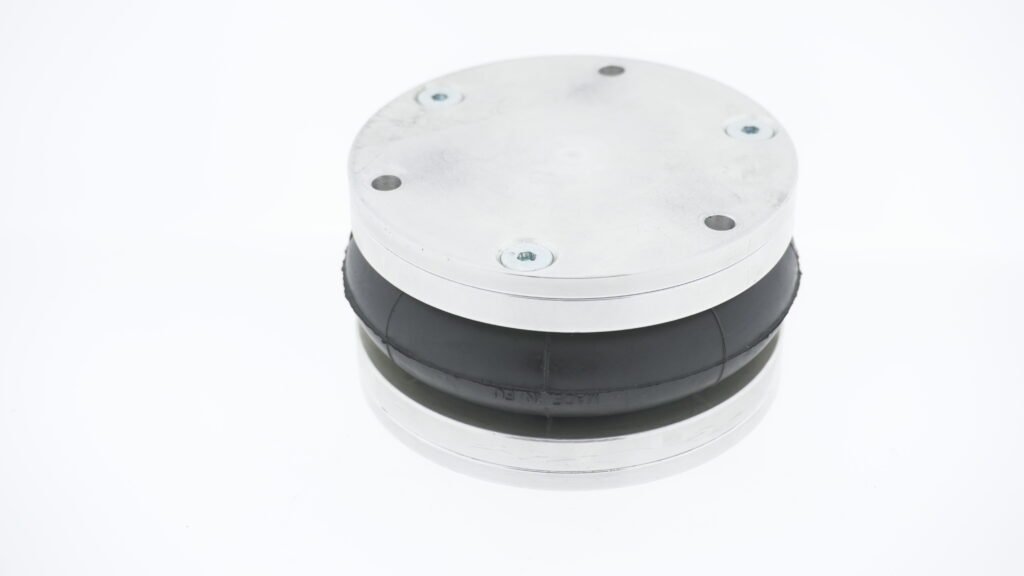
Air bellows suspension plays a critical role in modern vehicle stability and suspension systems. We focus on the intricate mechanics of air bellows, exploring how they enhance vehicle stability and improve overall suspension performance. By understanding the technical aspects of air bellows design, we can appreciate their impact on vehicle dynamics and ride comfort. This article delves into the function, benefits, and applications of air bellows suspension, providing a comprehensive analysis for those seeking in-depth knowledge.
Understanding Air Bellows Function in Suspension Systems
Air bellows, also known as air springs, are integral components of pneumatic suspension systems. They replace traditional mechanical springs by using compressed air to absorb and dampen road shocks. We utilize air compressor units to adjust the air pressure within the bellows, allowing for precise suspension adjustment. This suspension technology provides variable suspension stiffness, enhancing both ride comfort and vehicle handling. The flexibility of air bellows enables us to maintain optimal ride height, regardless of load conditions.
Technical Advantages Over Traditional Suspension Components
When comparing air bellows to conventional shock absorbers and coil springs, several technical advantages emerge. We find that air bellows suspension offers superior load leveling capabilities due to adjustable air pressure. This results in improved vehicle stability during acceleration, braking, and cornering. Additionally, air bellows provide better damping characteristics, reducing the impact of road irregularities. The suspension flexibility afforded by air bellows allows for real-time suspension tuning, optimizing performance across diverse driving conditions.
Impact on Vehicle Dynamics and Control
The implementation of air bellows suspension significantly influences vehicle dynamics. By adjusting the suspension components electronically, we enhance chassis control and minimize body roll. The system’s ability to adapt to changing loads improves vehicle control and safety. Moreover, the precise suspension design of air bellows contributes to better traction and stability. We utilize sensors and controllers to monitor and adjust the suspension system, ensuring optimal vehicle performance at all times.
Materials and Construction of Air Bellows
The durability and effectiveness of air bellows are rooted in their advanced materials and construction. We manufacture air bellows using high-strength elastomeric materials reinforced with fabric layers. This design ensures resistance to fatigue and environmental factors. The air bellows components include airtight chambers that withstand high pressures. By focusing on material science, we achieve suspension durability and reliability. The robust construction of air bellows is essential for maintaining consistent suspension performance over time.
Integration with Advanced Suspension Systems
We integrate air bellows into sophisticated suspension systems that employ electronic controls. This includes adaptive suspension and active suspension technologies, which adjust the suspension stiffness dynamically. The suspension integration with vehicle control systems allows for enhanced ride quality and handling characteristics. By utilizing suspension advancements, we provide drivers with customizable settings to suit their preferences and driving conditions. The synergy between air bellows and electronic controls represents a significant leap in suspension technology.
Maintenance and Troubleshooting of Air Bellows Suspension
Proper maintenance of air bellows suspension is crucial for sustained performance. We recommend regular inspections of the air suspension components, including the air compressor, valves, and air bags. Common issues such as air leaks can affect suspension efficiency and should be addressed promptly. We provide guidelines for suspension troubleshooting, helping technicians diagnose and resolve problems. By ensuring the suspension system remains in optimal condition, we prolong the lifespan of the air bellows and maintain vehicle stability.
Applications in Different Vehicle Types
Air bellows suspension is utilized across various vehicle types, each benefiting uniquely from the technology. In commercial trucks, we leverage air bellows for superior load leveling, enhancing vehicle safety under heavy loads. Buses use air ride suspension to improve passenger comfort over long distances. Luxury cars incorporate air bellows for a smooth ride quality and advanced suspension features. Off-road vehicles benefit from adjustable ride height, allowing for better clearance and suspension optimization. The versatility of air bellows makes them suitable for diverse automotive applications.
Innovations and Future Developments
We are at the forefront of innovations in air bellows suspension technology. Current research focuses on integrating smart suspension systems with predictive adjustments based on road conditions. Developments in materials aim to enhance suspension reliability and reduce weight. We explore suspension upgrades that improve energy efficiency and reduce environmental impact. The future of air bellows includes greater connectivity with vehicle systems, enabling advanced suspension control. Our commitment to suspension innovation drives continuous improvement in vehicle stability solutions.
Economic and Environmental Considerations
Implementing air bellows suspension offers economic benefits through reduced maintenance costs and improved fuel efficiency. We find that vehicles equipped with air bellows experience less wear on tires and other suspension components. The adjustable nature of the system contributes to better aerodynamics, enhancing fuel economy. Environmentally, air bellows help reduce emissions by optimizing vehicle performance. We consider these factors vital in developing sustainable suspension solutions that meet modern regulatory standards.
Challenges and Solutions in Air Bellows Implementation
While air bellows suspension presents many advantages, challenges exist in their implementation. We address issues such as system complexity and cost by streamlining designs and utilizing modular components. Concerns about durability in harsh conditions are mitigated through advanced materials and protective coatings. We invest in suspension diagnostics tools to simplify maintenance and identify potential failures early. By proactively tackling these challenges, we ensure that air bellows remain a viable and efficient option for enhancing vehicle stability.
In summary, air bellows suspension is a pivotal component in modern automotive engineering. We have demonstrated how air bellows enhance vehicle stability, improve ride comfort, and offer adaptable suspension performance. Through technical innovation and dedicated research, we continue to advance the capabilities of air bellows, solidifying their role in the future of suspension systems. Understanding the complexities and benefits of air bellows suspension allows us to develop vehicles that meet the highest standards of safety and efficiency.
